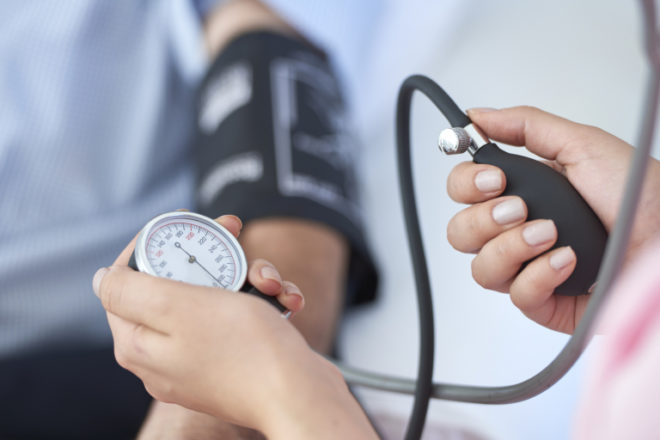
New Canadian research has found that 70 percent of blood pressure readings taken at home are inaccurate, news which could have big health implications for the millions of people who are asked to self-monitor their blood pressure with at-home devices.
Carried out by a team from the University of Alberta, the researchers recruited 85 patients and compared the results of the at-home monitors with the results from a gold standard method of tracking. This method involves two people taking several blood pressure measurements simultaneously, without knowing the other’s measurement, with a third person ensuring agreement between both observers’ readings.
Although the team found that the average difference between the home monitors and the gold standard measurements was acceptable, when they tested dozens of home monitors, they found that they weren’t accurate within five mmHg about 70 percent of the time and by 10 mmHg about 30 percent of the time, which is an unacceptable level according to the team.
Commenting on the significance of the results, lead researcher Jennifer Ringrose said, “High blood pressure is the number one cause of death and disability in the world. Monitoring for and treating hypertension can decrease the consequences of this disease. We need to make sure that home blood pressure readings are accurate.”
The results are also important due to the large number of patients being asked to monitor their blood pressure at home in order to report the results back to their doctor.
Canada updated its guidelines back in 2015 to encourage a greater use of at-home monitoring devices, recommending 28 measurements over one week for home devices.
However, the team believe that there is still value in at-home testing and pointed out that steps can be taken to minimize inaccuracies.
“Compare the blood pressure machine measurement with a blood pressure measurement in clinic before exclusively relying upon home blood pressure readings,” advised Ringrose. “What’s really important is to do several blood pressure measurements and base treatment decisions on multiple readings. Taking home readings empowers patients and is helpful for clinicians to have a bigger picture rather than just one snapshot in time.”
Although the team said many factors could be behind the inaccuracies, study co-author Raj Padwal suggested that, “arm shape, arm size, the stiffness and age of blood vessels, and the type of blood pressure cuff are not always taken into account when a blood pressure machine is designed and validated.”
“Individual differences, such as the size, age and medical background of the person using the blood pressure monitor are also contributing factors,” Padwal added.
They believe that industry and academia need to make a bigger effort to develop more highly accurate devices in the future.
The findings were published in the American Journal of Hypertension. JB
RELATED STORY:















































